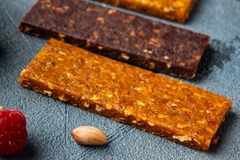Oats Make Food Ingredient Resurgence – Innova Market Insights
Over 1,360 breakfast cereals launches were recorded by Innova Market Insights in the January to June 2010 period, and nearly 45% contained oats, although this covered all types of cereals using oats as a significant component, not just oat cereals.

Oct 14 2010 --- The resurgence of oats as an ingredient in the food industry has continued in recent years, driven by their healthy image as a high-energy, wholegrain and heart-benefit food. Despite ongoing industry initiatives resulting in a wider use of oats in a whole range of bakery and cereal lines, including cereal bars, biscuits, cakes and even crumble toppings for desserts, breakfast cereals continue to be the key area of focus, accounting for nearly 40% of the 1,600-plus global launches of bakery and cereal products containing oats recorded on the Innova Database (www.innovadatabase.com) in the first six months of 2010.
Over 1,360 breakfast cereals launches were recorded by Innova Market Insights in the January to June 2010 period, and nearly 45% contained oats, although this covered all types of cereals using oats as a significant component, not just oat cereals. Cereal bars followed relatively closely behind, with over 40% of launches recorded containing oats, while at the other end of the scale, just 6% of bread launches contained oats, although this was up from less than 5% five years previously.
Innova Market Insights’ Head of Research LuAnn Williams reports that the appeal of oats appears to be growing unimpeded and giving impetus to a relatively mature breakfast cereals market. “As the healthy image of oats has developed further in the wake of research about controlled energy release on top of growing awareness of the link between oats, cholesterol levels and heart health, the potential for further development seems considerable,” Williams notes. “The additional benefit of a natural image has helped oats still further and aided the rising levels of demand in other sectors of the bakery and cereals market, including bread, biscuits, cereal bars and snacks, and ongoing high levels of activity in these and other product sectors seems inevitable,” she adds.
The health benefits of oats have traditionally been associated with the hot cereals/porridge/oatmeal market, which has been moving forward via more convenient formats in recent years, including single-serve sachets and ready-to-heat pots, and via the use of added-value ingredients such as fruit and nuts. Prepared porridge in single-serve cups is already an established market in the US, where brands like Kozy Shack’s Ready Grains offer an even more convenient ready-to-eat product that can be consumed either hot or cold.
Australia saw an interesting initiative in early 2010 with the launch of an Oats range from cereals/nutritious snacks brand Uncle Toby’s from Nestlé. Milk or water is added to the dried cereal in its single-serve cup and it is then microwaved before serving. Australia, despite a relatively small overall market because of its small population size, has a high per capita consumption of cereals at about 6.5 kg, and there also appear to be very high levels of interest in oat cereals, with the Innova Database recording that about two-thirds of the cereal launches in the first half of 2010 contained oats.
The UK has also seen some interesting developments in recent months, with the extension of Quaker’s Paw Ridge children’s brand with a blueberry variant. The brand was first launched in October 2009 positioned as a healthy alternative to sugary cereals and its low sugar content means that it is one of the few cereals that can be advertised directly to children. In a development more targeted at the adult market, the Scottish oatcake maker Nairn entered the cereals market with a range of oat products, featuring both hot and cold lines, while oat cereals specialist Mornflake revamped its range with a number of new cereals, also including both hot and cold options.
There has been rising interest in cold oat-based cereals, as they are generally perceived as more convenient to eat and more suitable for year-round consumption, and as a result many companies are now offering both hot and cold variants.
Over the Atlantic, the US has the largest breakfast cereals market in the world and also one of the most developed demands for wholegrain lines, where oats play a very significant part. Although levels of new product activity in cereals are higher in Europe overall, reflecting the larger number of countries and companies involved, the US is seeing greater usage of oats in new products, with oats featuring in nearly 60% of the cereal launches recorded over the January to June 2010 period.
These include standard oatmeal and cold oat cereal lines, as well as products with a strong health positioning using additional ingredients and benefit claims and/or a premium-style indulgent image. Oat cereals market leader Quaker, for example, moved into the indulgence sector with its True Delights range of oat cereals in premium-style flavours such as Hazelnut Latte and Wild Blueberry Muffin.
Such is the interest in the sector that whole new ranges are appearing, with Malt-o-Meal’s Better Oats range a key example. Made with 100% wholegrain oats and ground flax, the range is marketed as a good source of omega-3 and was launched in March 2010 with 34 different offerings including Oat Revolution in 11 flavours, Oat Fit for the weight conscious, Lavish for an indulgent chocolate great, Oat Heads for children, Abundance made with 6 whole grains and Raw Pure & Simple, an organic 5-whole-grain cereal also including quinoa and barley.














